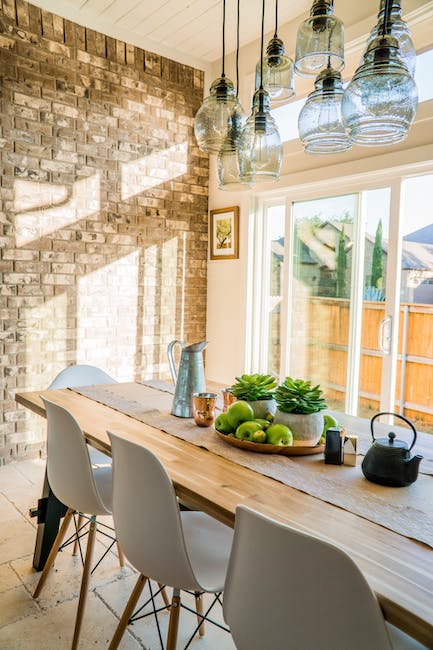Maximizing Space and Style: Essential Tips for Designing the Dining Room Layout and Furniture

Designing for functionality is essential in home decor projects, and your dining room is no different. Your furniture arrangements and layout have a major influence on its functionality and style – with proper planning you can maximize space while creating an aesthetically pleasing yet intimate dining area for meals, gatherings, or quiet moments of solitude.
At the core of designing a functional dining room is its layout; this should promote easy movement and comfortable seating arrangements. When making decisions on this front, take into account both room size and anticipated seating needs; for instance, intimate spaces may benefit from round tables for easy conversation that fit within compact spaces while larger dining rooms may accommodate long rectangular tables for large family dinner parties or parties with guests.
Planning the layout requires taking traffic into consideration as well. Your dining table should be easily accessible from both the kitchen and living area, with enough room around it for people to move freely around it if you frequently host guests or have a large family. This consideration becomes especially relevant if hosting guests is something you do frequently or if hosting large gatherings is part of life for you.
Once you’ve selected the layout, it’s time to select furniture. Your dining table should serve as the focal point of the room; therefore it should be both functional and aesthetically pleasing. Materials and designs matter here too – wooden tables add warmth while glass tables add contemporary chicness.
Chairs are just as essential to an enjoyable dining experience, so make sure yours are comfortable and proportionate to the table. Also keep a few extra chairs handy in case of guests who arrive unexpectedly; stackable or bench seating could help save space when not being used.
Storage is also key in designing an efficient dining room. A sideboard or buffet provides space for tableware and linen storage while simultaneously serving as a surface for serving food or displaying decorative pieces. If your dining area is compact, consider furniture pieces with double functions, such as dining tables with drawers or benches equipped with storage underneath.
Lighting is also an integral element in the dining room, from creating a focal point and setting the atmosphere to adding dimmers so you can adjust lighting for different events and occasions.
Consider adding mirrors or artwork to the walls if space allows. They will make your small dining area seem larger while adding character and color.
Designing an efficient dining room involves carefully considering its layout and furniture choices, taking into account factors like room size, traffic flow, storage needs and style preferences. An elegantly designed dining room will add another level of enjoyment whether hosting a dinner party or having family meals together.




